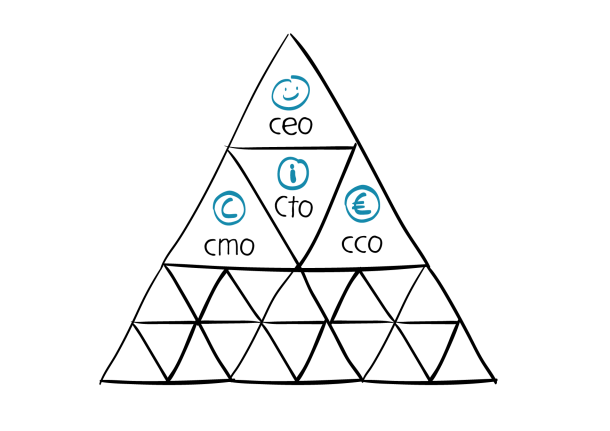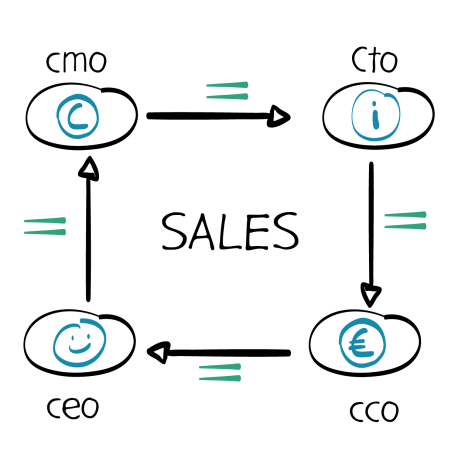Afraid to be disrupted? Organize for flexibility!
About the necessary transformation from organizational pyramids to processing power for similar purposes…
I was doing research for my new book ‘Playing on the job’ (working title) when I stumbled upon this picture of how a kingdom worked in the middle ages and concluded that this is actually how a lot of organizations (and countries) still work. Where a pyramid is actually a solid structure that can last for centuries – as an organizational structure it is far from ideal. For some reason we just never seem to have found an alternative in the past centuries and even decades. One of the main reasons for this is the internal obstacles that need to be overcome… The most dominant obstacles I discovered during my research are:
- organizational structure
- systems / software
- lack of support (from either management or employees) to change, often caused by the ruling company culture.
Why organizational change is so hard to achieve is that in most cases the current structure is perceived as solid and the software and systems (compliance, legal, business rules, KPI’s) keep the structure in it’s place. If not the structure and systems, the lack of support ensures that the desired change will actually never take place. You could say that change will never happen if the culture doesn’t allow it to happen.
Inspired by games and game mechanics I’ve come up with a new structure that might help organizations to transform, continuously and infinitely. It all starts with defining the purpose on different levels:
- Purpose or mission for the entire organization
- Objective for a business unit or department
- Goals for individual business leaders, managers or category members
- Challenges for employees
We often see that different departments have different KPI’s. If you create islands in your organization and hold them accountable for different KPI’s they will never work together, let alone help each other to achieve those challenges, goals or objectives. If you make all departments responsible for the same / similar goals they most likely will help each other…
During my years in advertising we developed a lot of ‘brand books’ explaining the brand values and positioning of a particular company or brand. Of course it also described the purpose (or mission) of the company. What we never did was explaining how these values or how the main purpose could work or how they were relevant for individual departments or employees. The main thing that drives people in life is purpose, often fueled by curiosity and lust for more… (better, faster, stronger).
So a pyramid is an excellent structure in terms of building a long lasting organization, given that you align purpose with objectives, goals and challenges. However to overcome those challenges and to be able to achieve the set goals and objectives, a pyramid is terrible structure to work with. Especially in this digital age where the internet and international scale of the economy forces organizations to become more agile, lean and responsive a new way of ‘organizing’ is needed. So how can you organize for flexibility?
Inspired by games I came up with the following evolution which could lead to a revolution in your organization and help you to withstand disruption. Instead of working in a hierarchic structure, managers (and employees) should work around in a processes that supports the purpose in the pyramid. So to organize for flexibility companies should transform from a hierarchic / pyramid structure to a process oriented structure. I gave an example below for the sales process.
A CEO wants to have happy clients. This can be achieved by building an appealing brand (C), which is the CMO’s task. To be able to build a strong brand and make clients happy, the company needs to have the right information about the clients needs and whereabouts (i). If that is all in place, the Chief Commercial Officer can sell the right, relevant products to the right clients within the right context (time and place) through the right channels.
Instead of communicating these KPI’s in a hierarchic way (top down), you should look for the interdependent relationship of these KPI’s as a process. In other words: how can an appealing brand gather information on and create customer insights that lead to better products and eventually more sales? Instead of rewarding departments for individual objectives, you can reward all contributors to the process equally for their efforts or effect on the process.
If you want me to explain how this could work for your organization, send an email to Bart at BrandNewGame (dot com ;-).
1 reply to “Afraid to be disrupted? Organize for flexibility!”
leave a reply
you must be logged in to place a comment.









Thursday September 14, 2017 at 12:43 am
Exceptional!